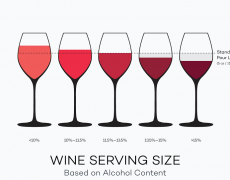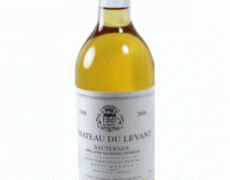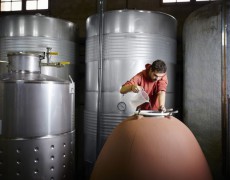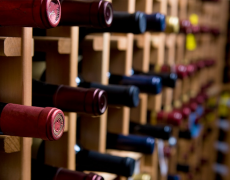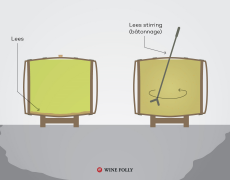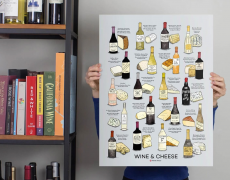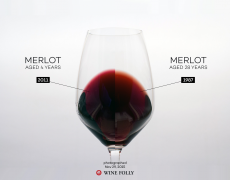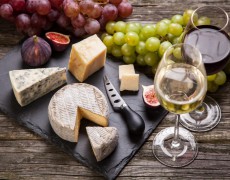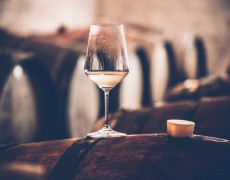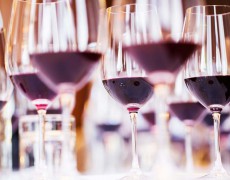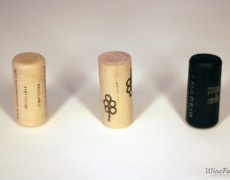If you love wine, give thanks to yeast. Explore the role it plays in fermentation, the risks involved and the debate over wild versus cultured yeast.
BY ANNE KREBIEHL MW

What is yeast? What does it do?
Yeasts are single-celled fungal organisms. Without them, there would be no alcohol. Not wine, nor beer, nor any spirits distilled from various fermented carbohydrates, be they grape or grain, potato or agave, sugarcane or sap.
Yeasts love sugar. They feed upon it to live, hence their scientific name Saccharomyces, or sugar fungus. They convert sugars into alcohol, which creates carbon dioxide and heat. This is how the dough in bread rises, how malted grain turns into beer and grape must turns into wine.
There are hundreds of yeast species, and from them, countless strains. Some, like Candida, which convert sugars to gas and acids, exist in our bodies. While most yeasts are beneficial, some spoilage yeasts impair the flavor of food and drink. It was not until the 19th century that science began to understand the function of yeasts, but grain and fruit has been fermented for millennia.
Are there inherent risks to fermenting wine?
Yeasts require certain conditions to do their work: warm temperatures and a sugary environment that’s not too acidic. Apart from sugar, yeasts also need nutrients like nitrogen and vitamins. As long as these conditions are met, yeasts will ferment fresh grapes into delicious wine.
This is where the magic happens. As yeasts consume sugars and turn them into alcohol, all the sugar-bound aromas are set free to express themselves. This is why wine tastes so fundamentally different from grape juice and develops so many fascinating new flavors not originally detectable in the fruit itself.
But fermentation is a fraught process. If a ferment gets too hot, yeasts will weaken and die. An insufficient nutrient supply can create off flavors, and can even stop fermentation. If the ferment is too cold, it will not start. Or it will stop after getting underway. Winemakers call the latter a “stuck fermentation,” a disaster that leaves partially-fermented sugary liquid vulnerable to fungal and bacterial spoilage.
Winemaking was difficult before the advent of temperature control. Coaxing barely ripe, sour grapes to ferment in cold, northerly cellars or attempting to control runaway fermentation in large, bubbling tanks was not uncommon. Now we can manage every aspect of fermentation. The nitrogen content of grapes can be measured, and their acidity can be adjusted. Cellars or fermentation tanks can be warmed to kick-start the yeasts, then cooled to keep fermentation steady and flavors fresh. Fermentation can also be stopped to create sweet wines with natural residual sugar.
 Grapes at Oenolpi Winery on the Greek island of Zakynthos / Photo by Robert Wallace via flickr
Grapes at Oenolpi Winery on the Greek island of Zakynthos / Photo by Robert Wallace via flickr
What is natural or spontaneous fermentation?
Left to its own devices, pressed grape juice or crushed grapes will start to ferment due to natural yeasts present on grape skins and in the winery. This is known as natural, wild or spontaneous fermentation.
In natural fermentation, various strains of yeast will get to work, but most will die off quickly. Eventually, a strain of alcohol-tolerant Saccharomyces cerevisiae takes over to finish the job, but spontaneous ferments are unpredictable and can be hard to get going.
To help matters along, winemakers often started a small, so-called pied de cuve with a bucket of ripe, healthy grapes a few days before harvest. They used this live culture to inoculate new ferments and avoid spoilage.
How did cultured yeasts come about?
Imagine being a winemaker who has tended vines from pruning to harvest, only to lose an entire year’s work to a spoiled or stuck fermentation. This used to be a very real risk. In the 1970s, scientists began to isolate and multiply certain yeast strains. Fresh grape musts or crushed grapes began being inoculated with rehydrated, freeze-dried granules of a dominant strain. It kills all other yeast strains and sees a clean fermentation completed within one to two weeks. Barring gross negligence, the risk of stuck fermentation is eliminated.
Hundreds of cultured yeasts are available commercially, and many have been cultivated from specific regions and wineries to preserve their local character. They guarantee predictable, clean and safe results. While most cultured yeasts are neutral, imparting little flavor on to the wine, some have additional properties. So-called aroma yeasts favor the synthesis of certain thiol compounds responsible for tropical fruit notes in grape varieties like Sauvignon Blanc. Some convert sugar into alcohol more or less effectively, while others work more efficiently at certain temperatures.
Are spontaneously fermented wines better?
To make a good, clean wine with spontaneous fermentation is only possible with healthy, high-quality grapes. Those depleted of nutrients, carrying residues from antifungal spray or containing otherwise moldy or rotten fruit may not start to ferment. If they do, the finished product may not be palatable. A spontaneous ferment, even with the finest grapes, still requires lavish care.
Hans Oliver Spanier, of Weingut Battenfeld-Spanier in Rheinhessen, Germany, farms his vines biodynamically and has never used cultured yeasts.
“Spontaneous ferments are complicated,” he says. “Stuck fermentation is a real risk. Undesirable yeast strains are a risk, too, [as] is volatile acidity. There are wines that just won’t ferment to dryness.”
Spanier likens wild ferments to cheese made from unpasteurized milk. He says that spontaneous ferments are best suited to smaller productions, where such care is possible.
“You have to pay the fullest attention,” says Spanier. “It’s far more laborious, but for us, wild ferments are the ultimate expression [where] you have a sort of three-dimensionality of flavor. But we achieve commensurate prices for our wines. By the same token, I have had the most amazing wines made with cultured yeasts. I am not dogmatic.”
There’s a popular thought that spontaneous ferments are better because they convey a real sense of place by using only naturally, locally present yeast populations. That also chimes with the concept of low-interventionist winemaking that avoids unnecessary additions.
Against that stand are winemakers who use locally isolated, completely neutral cultured yeasts. They feel that these convey the purest sense of their fruit, as opposed to cellar populations of yeasts that take over the ferment. In production, the choice between spontaneous and cultured yeast is one of style and philosophy rather than quality.
In larger-scale winemaking, wild yeasts carry too many risks. High-volume wine brands rely on familiar, repeatable flavor profiles, and the predictable, clean and quick ferments of cultured yeasts help achieve that. It can be argued that cultured yeasts helped create today’s popular wine culture through production of affordable, clean-tasting wines.
Wineries also rely on the efficiency that cultured yeasts guarantee, because spontaneous ferments can take their own sweet time. I remember putting my ear to the bunghole of a 500-liter barrel of Chenin Blanc at Domaine Bernard Baudry in the Loire Valley eight months after harvest, and the wine inside could still be heard quietly fermenting away. That’s not an option for a large-volume winery with a national distribution schedule.
Yeasts and fermentation work has improved wine quality immensely. Even the most affordable wines taste clean and appetizing. Just 40 years ago, this was not always the case.
How does yeast affect the flavor of my wine?
The role of yeast does not stop with fermentation. Once all of the available sugar has been converted into alcohol, the yeasts die and settle at the bottom of the fermentation vessel. This creamy, sludge-like substance—called gross lees—is made up of dead yeast cells and grape debris. Only wines made from healthy and perfectly ripe grapes can stay on their gross lees, as the risk of spoilage and stinky aromas is great.
______________________
“I always taste some of the gross lees. It’s a golden, appetizing carpet of yeast, and it’s delicious.” —Caroline Spanier-Gillot, Weingut Kühling-Gillot
______________________
Most wines are taken off their gross lees after fermentation in a process known as racking. The gross lees are then discarded. The remaining lees that precipitate after the first racking are known as fine lees, and they’re beneficial to wine, as they protect against oxidation. With time, fine lees can add a creamy texture and rounder flavor.
In the case of Muscadet sur Lie (the French term for on the lees), a certain amount of aging on yeast is required by appellation rules and makes a lot of sense. Without it, this cool region on the French Atlantic coast would produce rather neutral and thin wines.
If winemakers want to create a pronounced creamy texture, they can also stir the less to create more interaction with the wine. This process, known as bâtonnage, is often done with barrel-aged Chardonnay. Concrete eggs, which have also become popular as fermentation and aging vessels, create a vortex in the liquid that keeps lees in constant suspension, resulting in a rounder mouthfeel.

Who are the bad guys in the world of yeast?
Sugary grape juice, crushed grapes and must are vulnerable substances on which fungi and bacteria feed. That is why hygiene in the winery and a prompt ferment are so important. The resulting alcohol protects the wine from many harmful organisms.
Some yeasts, however, tolerate alcohol well. The most common culprit is Brettanomyces bruxellensis, which survives in old, used barrels that have not been cleaned properly. This spoilage yeast is used purposefully in another familiar type of fermentation—to impart distinct flavors in certain styles of beer. But for wine, it creates unpleasant volatile phenols that contribute aromas described as barnyard, sweaty horse and bandage.
In very small concentration, they can add complexity to wine, and some people like these strange smells that once were common in some mature wines. But today, “Brett” is commonly considered a wine fault.
What is the future of yeast?
Scientists are working to improve commercial yeasts due to an ever-increasing need for complexity and differentiation in wine. Microbiologists are trying to create cultured non-Saccharomyces yeasts that mimic the population diversity of wild ferments.
As science learns of the metabolic processes of certain grape constituents and how they behave during fermentation, yeasts can be engineered for specific purposes. One might convert some sugars into glycerol rather than alcohol, which can be handy in hot regions with high-alcohol wines. Or a yeast can be bred to reveal more of the varietal character of grapes through its aroma compounds.
 Caroline Spanier-Gillot with her bread.
Caroline Spanier-Gillot with her bread.
What can you do with leftover yeast from winemaking?
Oliver Spanier’s wife, Caroline Spanier-Gillot, who has her own Kühling-Gillot estate in Rheinhessen, has taken the idea of yeast full circle.
“I always taste some of the gross lees,” she says. “It’s a golden, appetizing carpet of yeast, and it’s delicious.”
She hated having to discard the gross lees, so she asked her local baker to use the yeast to make bread.
“We brought him a small barrel of yeast, and he started experimenting,” she says. “He makes two breads, one from the yeast from the limestone vineyards, one from the rhyolite. The yeast is added to a kind of sourdough 24 hours before baking, as the spent lees cells no longer have the same power as fresh yeast, but it helps to make the bread rise beautifully.”
 Caroline Spanier-Gillot’s bread baked with leftover wine yeast
Caroline Spanier-Gillot’s bread baked with leftover wine yeast
Source: winemag.com

